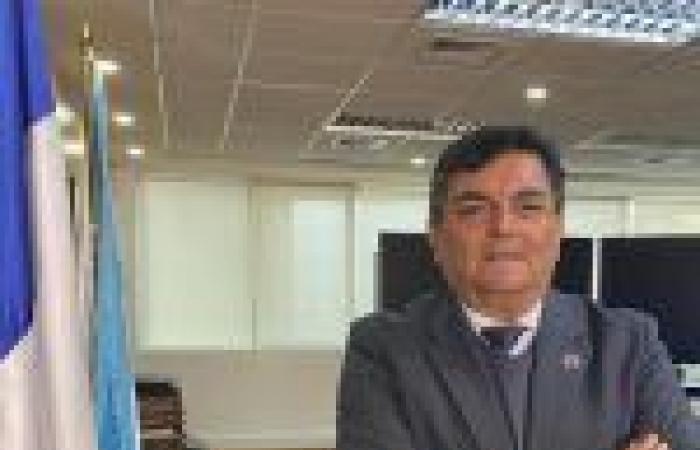
The main objective of this stage will be to continue promoting and materializing the initiatives detected and prioritized in order to strengthen and link researchers and thus increase CTCi human capital in the area.
The Living Desert Node will continue working for the fourth consecutive year to strengthen the CTCi capacities of the Northern Macrozone (regions of Arica and Parinacota, Tarapacá, Antofagasta and Atacama) and the articulation between the actors of the CTCi ecosystem (Science, Technology, Knowledge and Innovation).
This, after being awarded a new proposal in the “Macrozonal Nodes-Call 2024” Contest of the National Agency for Research and Development (ANID), and in which the University of Tarapacá (UTA), Arturo Prat University (UNAP), Catholic University of the North (UCN), University of Antofagasta (UA) and University of Atacama (UDA) participate and which since its first year has been executed by the Scientific Technological Park (PCT) of the Catholic University of the North.
The director of the Node will be the dean of the Faculty of Economics and Administration (FACEA) of the UCN, Fernando Álvarez Castillo.
The academic, who has participated since the genesis of this project, highlighted the importance of this initiative that ranges from the Arica and Parinacota region to the Atacama region, with the commitment and participation of different higher education institutions located in the territory. “They are the main universities located in the Northern Macrozone, and today, with a fourth year of execution of the project, it allows us to continue strengthening the capabilities of CTCi in the Macrozone, as well as being able to generate collaboration networks between the different actors that are part of this ecosystem of science, technology, knowledge and innovation; and, from this, be able to transfer this knowledge to different territories. It is a super important challenge in terms of the development of sustainable mining, in the generation of renewable energy and astronomy, among other issues associated with productive diversification, such as tourism and the exploitation of marine resources.“, specific.
ORIGIN
The Node has already been awarded two previous tenders, the first of them in 2020, whose development was focused on generating a diagnosis that would allow the CTCi capabilities of the Northern Macrozone to be raised, defining a set of areas or strategic lines for the regions of the Macrozone and, from this, build a roadmap that would allow defining a shared vision and a set of initiatives, drives and trends that in a short, medium and long-term horizon would allow the detected gaps to be reduced.
Then came a second competition, which covered the years 2022 and 2023 and which gave continuity to the work of the first period, but which was also accompanied by a strengthening project, which made it possible to accompany the previous work with the design of a platform equipped of a database that consolidates the CTCi capabilities of the Northern Macrozone. This will allow us to know the work being carried out in the universities and research centers of the Macrozone, their installed capacities and the generation of collaboration networks between actors who may be developing similar topics, promoting synergies and multidisciplinary work.
The third year, a new contest was awarded, called Continuity, which included the years 2023 and 2024, which allowed the Node to better focus its work on articulation, dissemination of knowledge and appropriation of advances, increasing its coverage in the territories of the Macrozone. , convening a greater number of actors and strengthening the capacities of the actors through training, interaction and the generation of multidisciplinary networks and collaboration.
This work has been possible from the execution of initiatives prioritized by the Node Roadmap, its update and the challenges of each of the regions of the Macrozone reflected in their regional planning instruments (such as Gores Development Strategies and ERIs), generating important synergies, networks and collaboration from a series of workshops, courses, webinars, workshops and other events that have contemplated this strategy of dynamization towards the territory and the effort to mobilize knowledge towards every corner of the Macrozone .
OTHER NODES
In this phase, the articulation of the Node with the work started in these years by the Natural Laboratories has been important, another ANID initiative that comes to strengthen the CTCi ecosystem in the territories and that in the case of the Northern Macrozone has benefited 3 initiatives (LabAncestral, LANDATA and recently Laboratorio Natural Salares), which add to the work that the Node had been developing and that today will be able to join forces to strengthen the CTCi in the territories of the Macrozone and promote the transfer of knowledge and, through this , generate real impacts that mark the development and future of each of the participating regions.
CHALLENGES
In this fourth year of implementation, the roadmap will continue to be energized, mobilizing knowledge to the territory and thus generating greater transfer of knowledge and technology to support the development of the regions of the Macrozone and the different strategic axes prioritized by the Node (desert agriculture, astronomy, renewable energy, sustainable mining, productive diversification and water resources).
In this fourth year, we also expect greater closeness with other entities that are linked to the development of the CTCi in the context of the Macrozone, such as the CTCi Committee of each region, the macro-zonal CTCi regional ministry, regional governments, and representatives of the organized private and social sectors.

